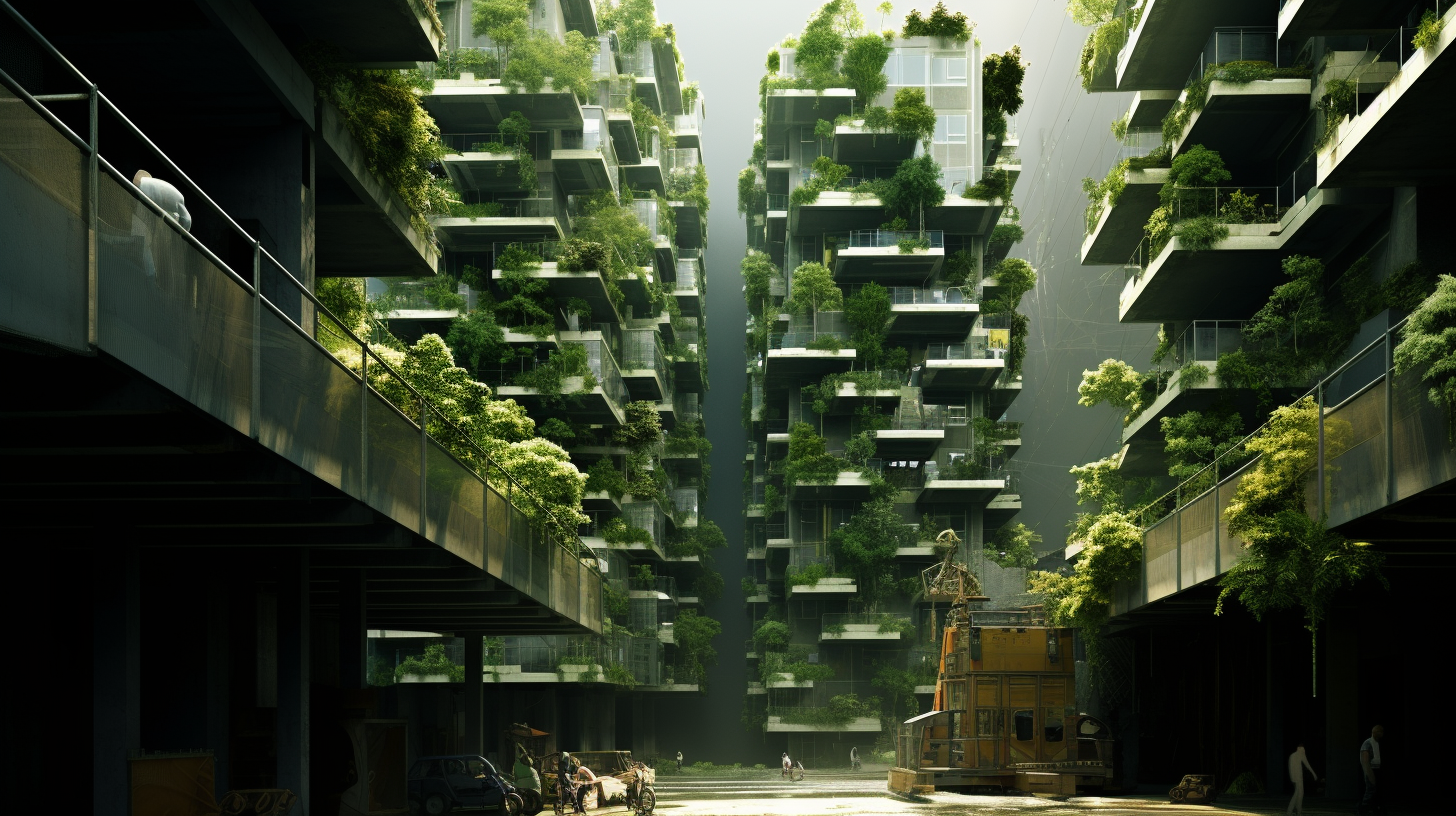Amidst the sprawling ruins of once-promising solar farms, nature, in its perennial wisdom, continues to whisper secrets of harmony—secrets we foolishly deem whispers of the wind. It is within this contradiction of green initiatives and gray outcomes that photosynthetic buildings, our last ditch architectural prophets, rise against the dystopian tide, offering a glimpse into a world where structures are not merely inert silhouettes against a choked sky but living, breathing entities.
In the heart of a smog-laden metropolis, out of the ashes of environmental despair, a structure emerges that challenges the very foundation of architecture. It is a building that is alive, not metaphorically, but literally. Its walls, coated with a concoction of algae and microorganisms, do not just lie in stagnant existence but actively pursue the task of cleaning the air, absorbing carbon, emitting oxygen, and even potentially synthesizing biofuels. These structures, deemed ‘photosynthetic buildings,’ stand as a testament to humanity’s inherent capacity for both creation and destruction.
With a façade that pulsates to the rhythm of an artificially harnessed chlorophyll-driven metabolism, these organic edifices push the boundaries, abiding by a set of principles aligned with the virtues of plants. The same principles, ironically, our societies have systematically snubbed, leading to our current climate predicament. Envision a building that not only offers shelter but serves as a mini-ecosystem, a beacon of resilience amidst a sea of environmental negligence.
Conversations with architectural pioneers reveal a sardonic twist: the path forward seems to mimic the past, embracing nature’s design—a design we have been too arrogant to emulate until now. Experts propose a scarcely optimistic view of these green behemoths carving out a space for themselves within our concrete wastelands. Yet, the contrast they stress is stark. Whereas our attempts at harnessing solar energy have left us grappling with an aftermath of rare earth mineral exhaustion and e-waste landscapes, these living buildings could potentially self-replicate and decay into harmless organic matter.
However, as we traverse this green mirage of skyscrapers, we must tread lightly. We still find ourselves entangled within a web of ecological compromises. The looming question of sustainability remains tentative; after all, can one truly measure the environmental impact of biologically modified organisms populating urban jungles? Or is our pursuit of ecological innovation only painting a verdant veneer over a corroded reality?
The paradox of these green giants is both their allure and their admonishment. They beckon us towards an uncanny valley, where the line between the living and the inanimate blurs, raising ethical quandaries about our tampering with life’s building blocks. Do these photosynthetic titans represent a genuine stride towards symbiosis with the planet, or are they merely the next chapter in a sequence of ecological hubris?
This narrative remains open-ended, with the pages of its next chapters suspended in the outcome of our own actions. For now, the photosynthetic buildings ascend—mere seedlings in the ruins—standing as monuments to a way that could have been, had we heeded nature’s subtle whispers rather than silencing them.
Thus, we must ponder whether we are merely erecting another illusion, akin to the refracted truths we faced with our solar harvesting endeavors, or if, in the grip of climatic chaos, we have finally unearthed a tangible fragment of hope, one that could photosynthesize not just sunlight, but the grim shade of our own making.
